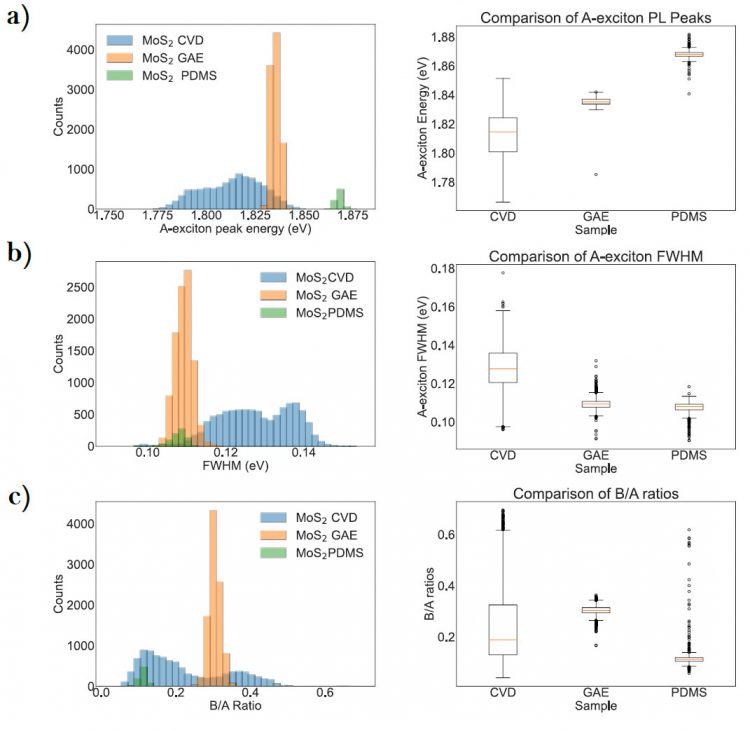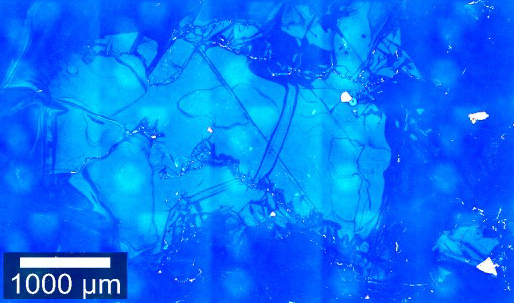Check out a recent Master thesis
Monolayers of two-dimensional transition metal dichalcogenides (2D TMDCs) such as those of MoS2 and WS2 offer a promising alternative to the use of Si in solar energy harvesting and other applications due to their direct bandgaps, high absorption efficiency, and their ultralight and flexible nature. For device applications, such monolayers need to be of large area and high quality. We extend the gold-assisted exfoliation method from MoS2 and WS2 further to ReS2 and ReSe2, to obtain their monolayers on large area of square millimetre size. The image above shows a (false color) optical microscope image of an exfoliated MoS2 monolayer, the size of which was only limited by the size of the crystal used to exfoliate it. We use these large-area monolayers to produce heterostructures, either with other 2D materials or with layers of nanocrystals.
Detailed analysis by photoluminescence (PL) and Raman spectroscopy shows that the exfoliated layer has high quality comparable to the conventional scotch-tape exfoliation. Here, we present results of the PL analysis. From fits of the PL spectra, we extract three important parameters and their distribution to analyze the quality of our samples:
i) the peak energy positions of the A- and B-excitons
ii) the FWHM of these peaks and
iii) the integrated number of photons emitted.
By performing this fit for each PL spectrum obtained for each pixel of the image, we obtain a distribution of the parameters as shown in Fig. 1a-c below that allows assessment of the quality and heterogeneity of the samples. The data shows that the large area gold-assisted exfoliated layers (GAE) show distributions as narrow as those of regular exfoliation (PDMS), indicating excellent homogeneity over the large area. In contrast, the large-area CVD-grown samples have much broader distributions, indicating large heterogeneity and poorer sample quality.
See Master thesis for full details.

